Published: July 17, 2025
“You need to be on both platforms.”
That’s what every PPC agency tells every client. Facebook AND Google. Instagram AND YouTube. LinkedIn AND TikTok. Because why choose one revenue stream when you can sell them all?
Here’s what they don’t tell you: Most businesses should focus on one platform first, master it completely, then expand strategically. The “omnichannel approach” agencies love to sell often leads to mediocre results across multiple platforms instead of excellent results on the right platform.
The truth is, Facebook ads and Google ads serve fundamentally different purposes, target different buyer behaviors, and require completely different strategies. Choosing the right platform for your business isn’t about budget size or industry—it’s about understanding where your customers are in their buying journey and how they prefer to discover solutions.
Big agencies don’t want you to make this choice because focused strategies require less management time and generate smaller retainers. It’s more profitable for them to manage campaigns across multiple platforms than to excel on the one platform that actually drives your revenue.
Let’s expose how the “more platforms = better results” myth serves agencies better than clients, and give you the framework to choose the platform that will actually grow your business.
The Multi-Platform Profit Machine
How Agencies Multiply Revenue With Platform Proliferation
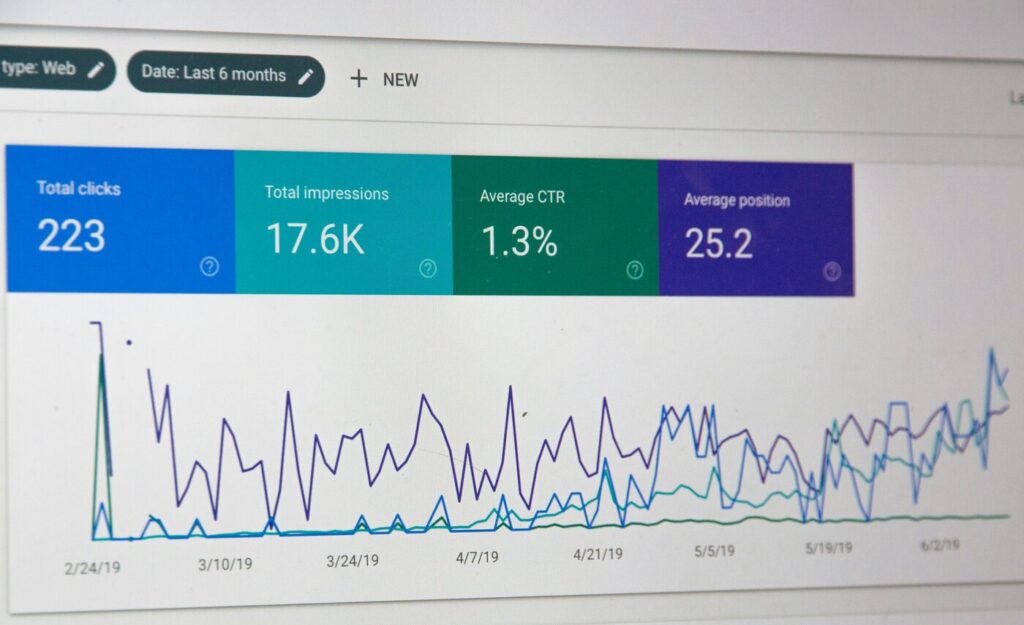
The Pitch: “Your competitors are advertising on both Facebook and Google. You need omnichannel presence to capture customers at every touchpoint.”
The Reality: Most businesses get better ROI from dominating one platform than struggling across multiple platforms.
The Agency Benefit: Instead of one $3,000/month Google Ads retainer, they now have:
- Google Ads management: $3,000/month
- Facebook Ads management: $2,500/month
- Cross-platform strategy: $1,500/month
- Reporting and optimization: $1,000/month
- Total: $8,000/month
Your Benefit: Diluted attention, smaller budgets per platform, less expertise per channel, mediocre results everywhere.
The Platform Expansion Upsell Cycle
Month 1-3: “Let’s start with Google Ads to capture high-intent traffic”
- $3,000/month management fee
- Decent results from focused attention and full budget
Month 4: “We’re seeing great Google results. Now we should add Facebook to capture earlier-stage prospects”
- Additional $2,500/month Facebook management
- Google budget stays the same, but attention is now split
Month 6: “Facebook is generating awareness. Let’s add retargeting to close the loop”
- Additional $1,500/month for “advanced retargeting strategy”
- Same total ad spend, now spread across more platforms
Month 8: “Your competitors are on LinkedIn. We should test B2B targeting there too”
- Another $2,000/month for LinkedIn campaign management
- Your attention and budget are now split four ways
Month 12 Results:
- Four mediocre platforms instead of one excellent platform
- 8x the management complexity for 1.2x the results
- Agency revenue increased 267% while your ROI decreased
Real Agency Email (Anonymized)
“Your Google Ads performance has been solid, which means we’ve captured the high-intent market. To grow beyond this level, we need to expand your funnel with Facebook Ads to capture prospects before they’re actively searching.
I’ve prepared a Facebook strategy that complements your Google campaigns perfectly. The cross-platform synergy should increase your overall ROAS by 30-40%.
Investment: $2,800/month for Facebook management + $500/month for cross-platform reporting.
Can we schedule a call this week to discuss expansion?”
Translation: “We’ve maxed out the growth we can deliver on Google with our current strategy. Instead of improving our Google approach, let’s add complexity and double our revenue.”
What They Don’t Say:
- The Facebook strategy will be generic, not business-specific
- Cross-platform synergy is mostly marketing speak
- ROAS increase projections are based on best-case scenarios, not realistic expectations
- Half your Google budget effectiveness will be lost to split attention
Do Facebook or Google Ads Work Better?
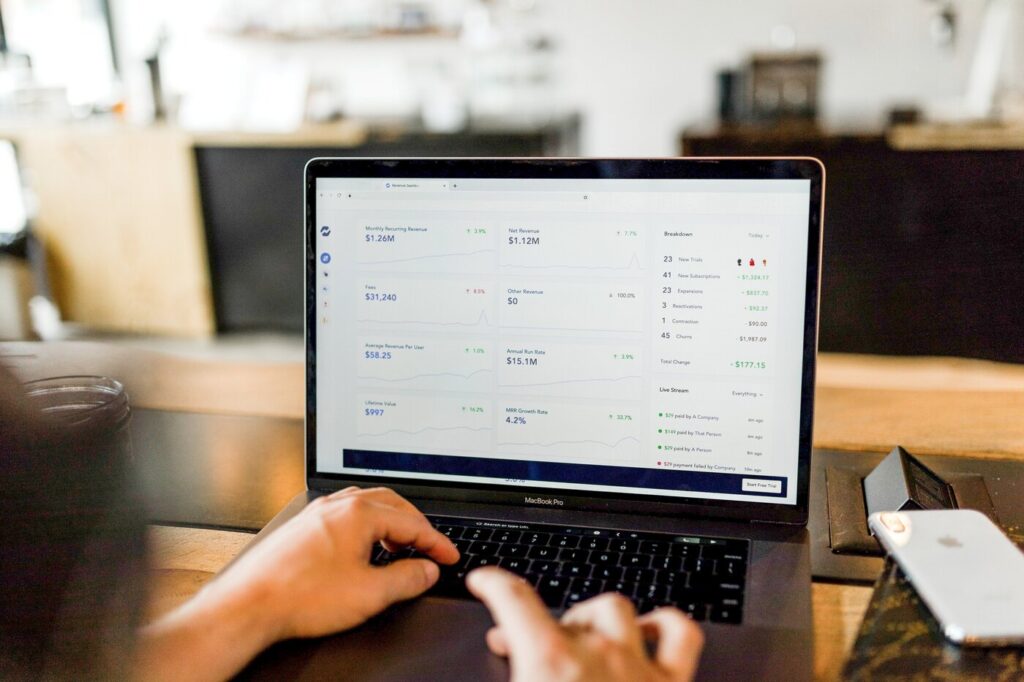
The answer isn’t which platform works better—it’s which platform works better for your specific business. This question reveals the core problem with how agencies approach platform selection: they treat it like a universal truth instead of a business-specific decision.
Google Ads: Capturing Active Intent
How Google Ads Work:
- People search for solutions to immediate problems
- You show ads to people actively looking for what you sell
- High intent, ready-to-buy traffic
- More expensive per click, higher conversion rates
Best For:
- Service businesses (plumbers, lawyers, contractors)
- B2B companies with clear search demand
- Emergency services (medical, repair, legal)
- High-consideration purchases (software, equipment)
- Local businesses with immediate needs (restaurants, retail)
Google Ads Strengths: ✅ High-intent traffic – People are actively searching for solutions ✅ Immediate results – Can generate leads within hours of launch ✅ Predictable costs – Cost-per-click relatively stable and measurable ✅ Local targeting – Excellent for location-based businesses ✅ Search term data – See exactly what triggered your ads
Google Ads Weaknesses: ❌ Limited audience size – Only people actively searching ❌ Higher competition – Established players bid up costs ❌ Keyword research required – Need to understand search behavior ❌ Limited creative format – Mostly text-based ads
Facebook Ads: Creating Demand and Interest
How Facebook Ads Work:
- Show ads to people based on demographics, interests, and behaviors
- Interrupt people during social media consumption
- Create awareness and generate interest in solutions they weren’t actively seeking
- Lower cost per click, lower immediate conversion rates
Best For:
- E-commerce businesses (fashion, accessories, consumer goods)
- B2C companies with broad appeal
- Businesses with visual products (food, travel, lifestyle)
- Content marketing and lead generation
- Brand awareness and customer acquisition
Facebook Ads Strengths: ✅ Massive audience size – 2.9 billion active users ✅ Detailed targeting – Demographics, interests, behaviors, lookalikes ✅ Visual creativity – Images, videos, carousels, stories ✅ Lower cost per click – Generally cheaper than Google ✅ Viral potential – Content can be shared and amplified
Facebook Ads Weaknesses: ❌ Lower intent – People aren’t actively searching for your solution ❌ Longer sales cycles – More touchpoints needed for conversion ❌ Platform dependency – Algorithm changes can devastate performance ❌ Creative fatigue – Ads lose effectiveness quickly and need constant refresh
Are Meta Ads Really Worth It?
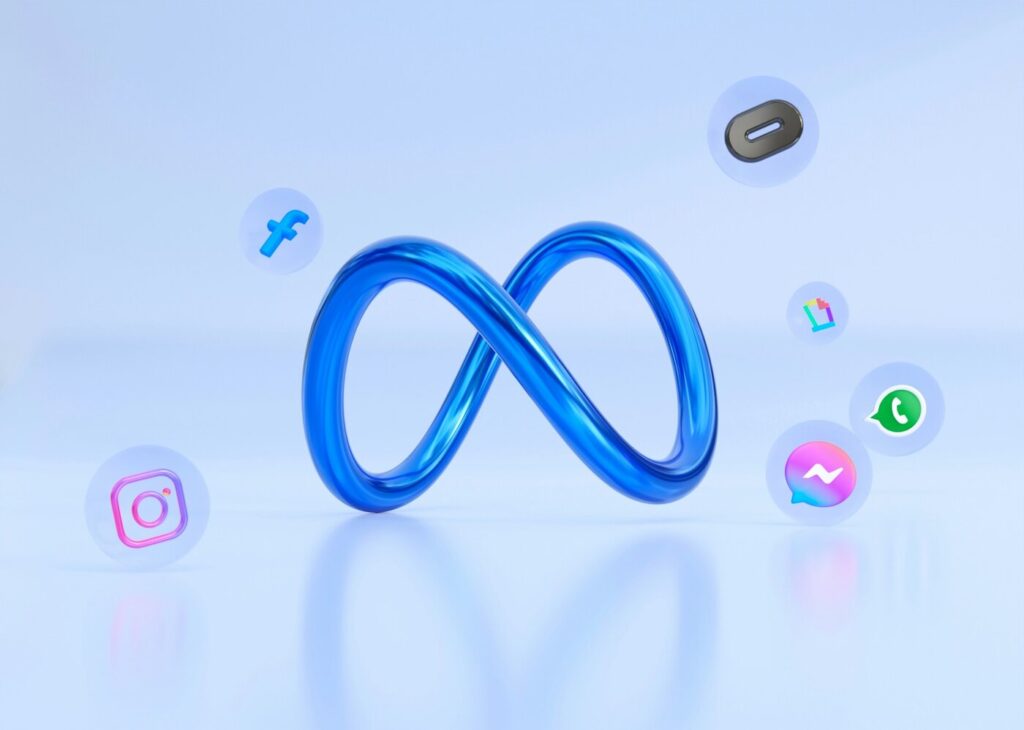
Meta Ads (Facebook and Instagram advertising) are worth it for businesses that fit the platform’s strengths, but agencies often oversell their universal effectiveness.
Meta Ads are worth it when:
- Your product is visually appealing and benefits from demonstration
- You’re targeting broad consumer markets with lifestyle interests
- You have capacity for ongoing creative production
- Your sales cycle allows for nurturing and multiple touchpoints
- You’re building brand awareness alongside direct response
Meta Ads are NOT worth it when:
- Your customers actively search for solutions (Google captures this better)
- You’re in emergency/urgent need industries
- You have limited creative resources
- You need immediate, high-intent leads
- Your product requires extensive explanation that doesn’t fit social formats
The “worth it” question depends entirely on your business model, not the platform’s general effectiveness.
What Are the Disadvantages of Meta Ads?
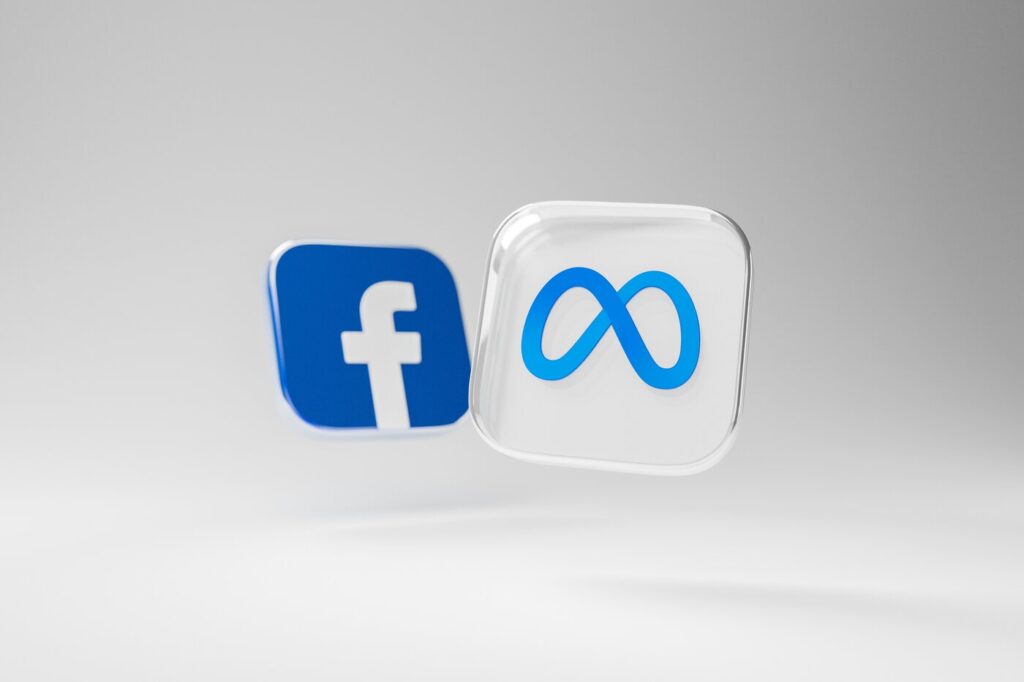
Unlike agency presentations that focus only on Meta’s benefits, here are the real disadvantages:
Creative Burnout: Meta ads lose effectiveness quickly, requiring constant creative refresh that many businesses can’t sustain.
Low Intent Traffic: People on Facebook aren’t looking to buy—they’re looking to socialize. Converting social media browsers into buyers requires significantly more skill and patience.
Algorithm Dependency: Your ad performance can change overnight based on Meta’s algorithm updates, with no advance warning or explanation.
Attribution Challenges: Meta’s attribution system often overclaims credit for conversions, making ROI measurement difficult and unreliable.
Audience Saturation: Popular targeting options become oversaturated quickly, driving up costs and reducing effectiveness.
Platform Instability: Business account restrictions, ad disapprovals, and policy changes can shut down campaigns without warning.
What Are the Disadvantages of Using Google Ads?
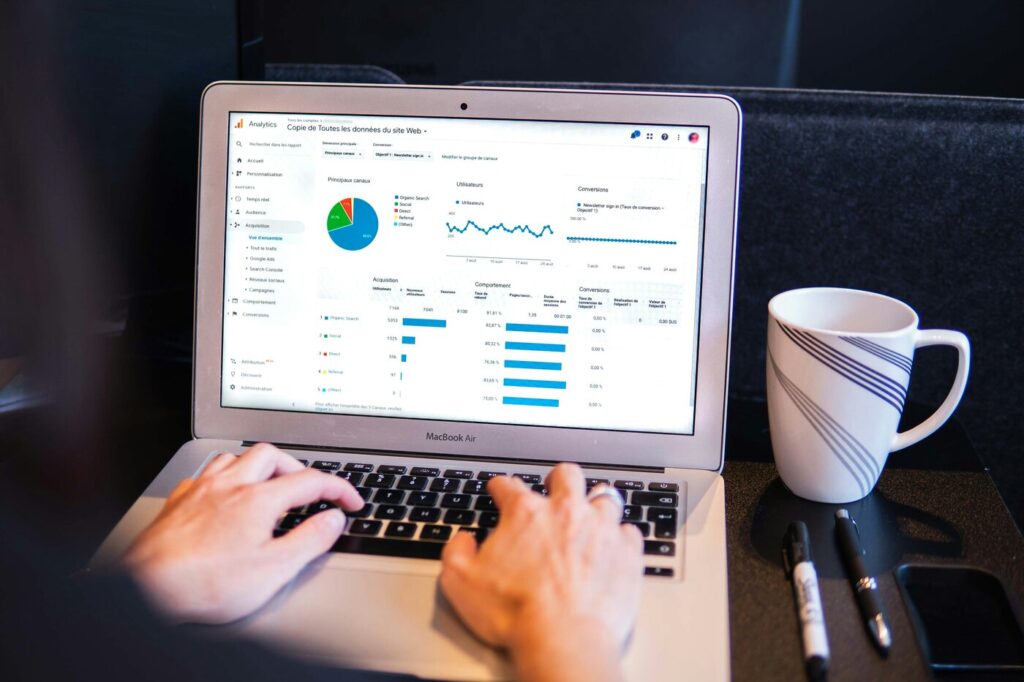
Google Ads has significant disadvantages that agencies often downplay:
High Competition: Established players bid up popular keywords, making entry expensive for new advertisers.
Limited Audience Size: You can only reach people actively searching for your keywords—missing potential customers who don’t know to search.
Keyword Complexity: Success requires extensive keyword research, negative keyword management, and constant optimization.
Click Fraud: Competitors and bots can click your ads maliciously, wasting budget with no protection.
Landing Page Requirements: Google Ads require dedicated, optimized landing pages to be effective—adding complexity and cost.
Learning Curve: The platform is complex with numerous settings that can dramatically impact performance if configured incorrectly.
Are Meta or Google Ads Better?
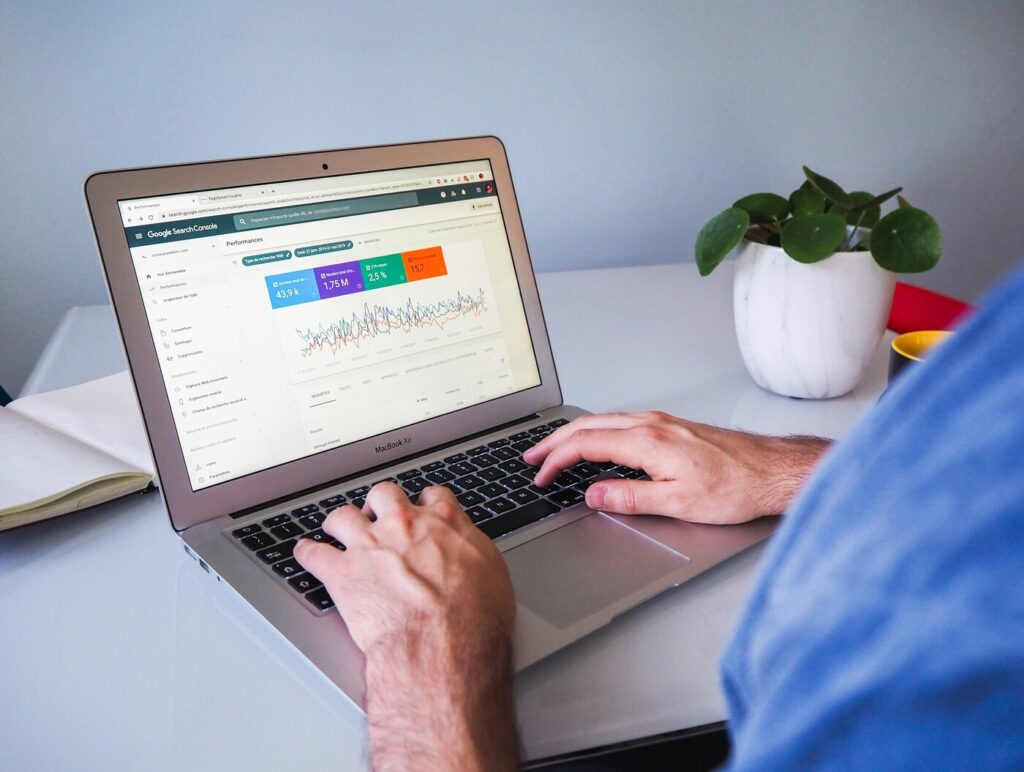
This question assumes there’s a universal “better” platform, which serves agency interests more than client interests. The real answer depends on your specific business context.
When Agencies Steer You Wrong
The “Best Practice” Manipulations

Agency Claim: “Best practice is to run both platforms simultaneously for maximum reach”
Reality Check: Best practice varies dramatically by business model, target audience, and buying behavior. Cookie-cutter approaches serve agency efficiency, not client results.
Agency Claim: “You need Facebook for brand awareness and Google for conversions”
Reality Check: Many businesses generate excellent brand awareness through Google Ads, and many close sales directly through Facebook. This artificial separation justifies dual platform management.
Agency Claim: “Cross-platform attribution shows how Facebook assists Google conversions”
Reality Check: Attribution modeling is often manipulated to show interaction between platforms, even when the connection is weak or coincidental.
Platform Selection Red Flags
🚩 Immediate recommendation for both platforms before understanding your business 🚩 Generic “omnichannel” strategy not tailored to your specific customer journey 🚩 Platform recommendations that coincidentally increase their management fees 🚩 Inability to explain why one platform would be better than the other for your business 🚩 Pressure to “test everything” instead of focusing on the most promising platform 🚩 Cross-platform reporting that obscures individual platform performance
Questions Your Agency Should Answer Before Platform Selection
- Where do your customers go when they have the problem you solve?
- Do they search for solutions, or do they need to be educated about solutions?
- What’s your typical sales cycle length?
- How visual is your product or service?
- What’s your customer lifetime value vs. acquisition cost tolerance?
- Do you have capacity to manage multiple campaigns simultaneously?
- What’s your total advertising budget and how should it be allocated?
If your agency can’t answer these questions specifically for your business, they’re not qualified to make platform recommendations.
The Platform Selection Framework
Step 1: Analyze Your Customer Journey
High-Intent Indicators (Google Ads Priority):
- Customers actively search when they need your service
- Emergency or immediate need-based purchases
- Complex B2B sales with research phases
- Local services with geographic urgency
- Professional services where expertise matters
Low-Intent Indicators (Facebook Ads Priority):
- Customers don’t know they need your product until they see it
- Impulse or emotional purchase decisions
- Visual products that benefit from demonstration
- Broad consumer markets with lifestyle targeting
- Products that solve problems people don’t actively search for
Step 2: Evaluate Your Business Model
Google Ads Advantages:
- Service Businesses: Plumbers, electricians, lawyers capture emergency demand
- B2B Software: Decision-makers research specific solutions
- Professional Services: Accountants, consultants capture active search demand
- Local Retail: “Near me” searches drive foot traffic
- High-Value B2B: Manufacturing equipment, enterprise software
Facebook Ads Advantages:
- E-commerce: Fashion, accessories, consumer electronics with visual appeal
- Consumer Services: Fitness, beauty, wellness that benefit from lifestyle targeting
- Content Businesses: Courses, coaching, information products
- Restaurants/Food: Visual products with broad local appeal
- B2C Software: Apps and tools with consumer appeal
Step 3: Assess Your Resources and Constraints
Budget Considerations:
- Google Ads: Higher cost-per-click, but potentially faster ROI
- Facebook Ads: Lower cost-per-click, but longer nurturing required
Creative Requirements:
- Google Ads: Text-focused, emphasis on compelling headlines and descriptions
- Facebook Ads: Visual-heavy, requires ongoing image/video content creation
Management Complexity:
- Google Ads: Keyword research, bid management, landing page optimization
- Facebook Ads: Audience research, creative testing, frequent content updates
Step 4: Consider Your Competitive Landscape
Google Ads Competition Analysis:
- Search for your main keywords
- Count how many ads appear above organic results
- Evaluate ad quality and messaging of competitors
- Estimate cost-per-click using keyword tools
Facebook Ads Competition Analysis:
- Research competitors’ Facebook ad libraries
- Analyze their targeting and creative approaches
- Identify gaps in their messaging or targeting
- Evaluate saturation in your target audience
Industry-Specific Platform Recommendations
Google Ads Priority Industries

Professional Services:
- Lawyers, accountants, consultants, real estate agents
- Why: High-intent searches with immediate need and high lifetime value
Home Services:
- Plumbers, electricians, HVAC, contractors, pest control
- Why: Emergency situations drive immediate search behavior
Healthcare:
- Dentists, specialists, urgent care, physical therapy
- Why: Health problems trigger active search for solutions
B2B Services:
- Marketing agencies, IT services, business consulting
- Why: Decision-makers research solutions before reaching out
High-Consideration Purchases:
- Cars, real estate, expensive software, enterprise equipment
- Why: Major purchases involve extensive research phases
Facebook Ads Priority Industries
E-commerce:
- Fashion, accessories, home goods, consumer electronics
- Why: Visual products benefit from lifestyle targeting and impulse purchases
Food & Beverage:
- Restaurants, catering, specialty foods, alcohol
- Why: Visual appeal and local targeting drive engagement
Fitness & Wellness:
- Gyms, personal trainers, wellness products, beauty services
- Why: Lifestyle and interest-based targeting captures aspirational buyers
Entertainment:
- Events, courses, coaching, content subscriptions
- Why: Interest-based targeting finds audiences who don’t actively search
Consumer Services:
- Photography, event planning, travel, personal services
- Why: Emotional and lifestyle-driven decisions respond to visual creative
Industries That Work Well on Both Platforms
Software/SaaS:
- Google for high-intent searches (“CRM software,” “accounting tools”)
- Facebook for awareness and feature-based targeting
Real Estate:
- Google for active buyer searches (“homes for sale”)
- Facebook for lifestyle and demographic targeting
Education:
- Google for specific program searches (“MBA programs,” “coding bootcamp”)
- Facebook for interest-based targeting and awareness
The Single-Platform Mastery Approach
Why Focus Beats Fragmentation
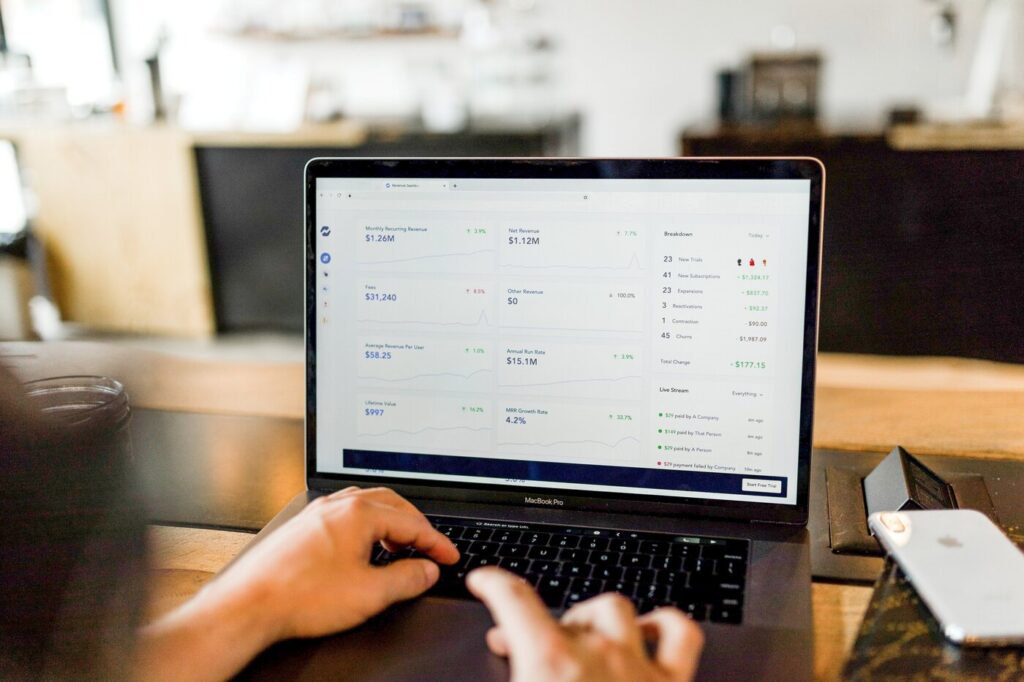
Concentrated Expertise:
- Deep understanding of one platform’s nuances
- Advanced optimization techniques specific to that platform
- Better creative development for platform-specific formats
- More sophisticated targeting and bidding strategies
Budget Efficiency:
- Full advertising budget concentrated on highest-ROI platform
- Lower management overhead allows more budget for actual ads
- Faster learning and optimization cycles
- Better negotiating power with larger platform spend
Measurement Clarity:
- Clear attribution without cross-platform confusion
- Easier to identify what’s working and why
- Simpler reporting and decision-making
- Direct correlation between actions and results
The Platform Mastery Timeline
Months 1-3: Foundation
- Account setup and initial campaign structure
- Baseline performance establishment
- Initial optimization and learning
Months 4-6: Optimization
- Advanced targeting refinement
- Creative testing and improvement
- Bidding strategy optimization
- Performance scaling
Months 7-12: Mastery
- Platform-specific advanced features
- Sophisticated audience segmentation
- Predictable performance and scaling
- Platform expertise that competitors can’t match
Year 2+: Strategic Expansion
- Add second platform from position of strength
- Apply lessons learned to new platform
- Maintain excellence on primary platform while testing secondary
Should I Learn Facebook Ads or Google Ads First?

If you’re learning advertising yourself, start with the platform that matches your business model, not the platform that seems easier.
Learn Google Ads First If:
- Your customers actively search for solutions
- You prefer data-driven, logical optimization
- You have limited creative production capacity
- You need faster, more predictable results
- Your business model fits search-based marketing
Learn Facebook Ads First If:
- Your product is highly visual and lifestyle-focused
- You excel at creative content production
- You’re building brand awareness for a new market
- You have patience for longer optimization cycles
- Your audience responds to interest-based targeting
The Agency Myth: “Learn Facebook first because it’s easier”
The Reality: Neither platform is easy to master. Facebook appears simpler because it’s more visual, but effective audience targeting and creative testing require just as much expertise as Google’s keyword research and bid management.
How Much Does a Google Ad Cost?

Google ad costs vary dramatically by industry, competition, and targeting, but agencies often manipulate cost discussions to justify higher management fees.
Average Cost-Per-Click by Industry:
- Legal: $50-$100+ per click
- Insurance: $20-$50 per click
- Finance: $15-$40 per click
- Healthcare: $10-$25 per click
- Home Services: $5-$15 per click
- E-commerce: $1-$5 per click
What Agencies Don’t Tell You About Costs:
- Management fees often exceed ad spend for small budgets
- “Competitive” keywords aren’t always the most profitable
- Long-tail keywords can deliver better ROI at lower costs
- Geographic targeting can dramatically reduce costs
Cost Control Strategies Agencies Rarely Implement:
- Negative keyword lists to prevent irrelevant clicks
- Geographic exclusions for non-serving areas
- Dayparting to avoid low-conversion hours
- Device bid adjustments for performance optimization
Is There Anything Better Than Google Ads?

For search-based marketing, Google Ads dominates market share for a reason—it works. But “better” depends on your definition and business needs.
Alternatives to Google Ads:
- Microsoft Ads (Bing): Lower competition, often better ROI for B2B
- Amazon Ads: Essential for e-commerce, product-focused businesses
- LinkedIn Ads: Superior for high-value B2B targeting
- YouTube Ads: Better for video-focused businesses and brand awareness
The Agency Perspective: “Google is best because we’re certified partners”
The Reality: Platform expertise should drive recommendations, not partnership status or management convenience.
What Is the Difference Between Google Ads Manager and Meta Ads Manager?

The platform interfaces reflect different advertising philosophies and user behaviors:
Google Ads Manager Focus:
- Keyword-based campaign structure
- Search intent and query matching
- Bid management and auction optimization
- Performance and conversion tracking
- Text-heavy ad creation tools
Meta Ads Manager Focus:
- Audience-based campaign structure
- Interest and behavior targeting
- Creative testing and optimization
- Engagement and reach metrics
- Visual content creation tools
The Agency Advantage: Agencies use both platforms daily and understand these differences. The question is whether they choose platforms based on what works for your business or what’s convenient for their operations.
Why Choose Meta Ads?
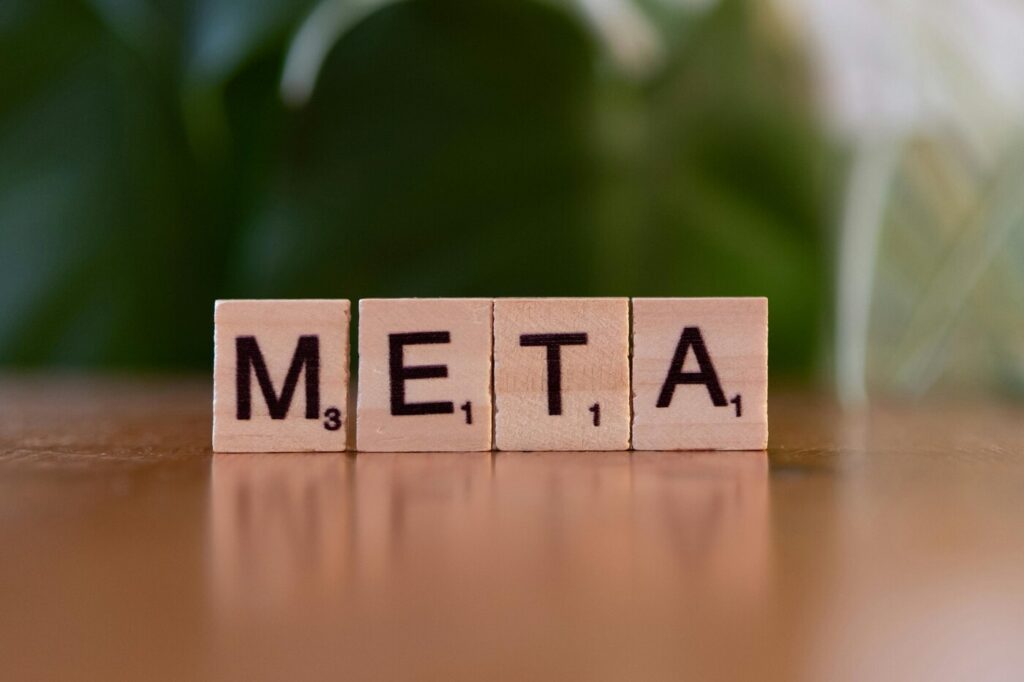
Choose Meta Ads when they align with your business model and customer behavior, not because an agency needs to diversify their service offerings.
Strategic Reasons to Choose Meta:
- Your customers don’t actively search for your solution
- Visual demonstration significantly increases purchase likelihood
- You’re building a lifestyle or aspirational brand
- You have strong creative production capabilities
- Your target audience spends significant time on social platforms
Revenue-Driven Agency Reasons (Red Flags):
- “Everyone should be on social media”
- “We need to capture customers at every touchpoint”
- “Cross-platform attribution shows Facebook assists Google conversions”
- “Your competitors are advertising on Facebook”
Are Meta Ads Still Worth It?

Despite platform changes and increased competition, Meta Ads remain effective for businesses that fit the platform’s strengths.
2025 Meta Ads Reality:
- Higher costs due to increased competition
- More sophisticated targeting required due to iOS privacy changes
- Greater emphasis on first-party data and customer lists
- Increased importance of creative quality and testing
When Meta Ads Are Still Worth It:
- You have strong first-party customer data
- You can produce high-quality, engaging creative content
- You understand your customer lifetime value and can optimize accordingly
- You have patience for platform learning and optimization
When to Reconsider Meta Ads:
- Your cost per acquisition exceeds customer lifetime value
- You can’t maintain consistent creative production
- Your audience primarily uses other platforms
- Direct response Google Ads provide better ROI
Can I Use Meta Ads Without Facebook?

Yes, but with limitations that agencies often don’t fully explain.
Instagram-Only Advertising:
- Can run ads on Instagram without a Facebook page
- Requires Instagram business account
- Limited to Instagram ad formats and placements
- Smaller audience reach than Facebook + Instagram combined
WhatsApp Business Advertising:
- Requires WhatsApp Business API
- More complex setup and management
- Better for customer service than advertising
- Limited availability in some regions
Agency Considerations: Most agencies will push for full Facebook + Instagram access because it:
- Maximizes audience reach for their reporting
- Simplifies their campaign management
- Provides more targeting data and optimization options
- Justifies higher management fees through increased complexity
How to Choose: The Platform Decision Matrix
Answer These Questions Honestly:

1. Where do your customers go when they need what you sell?
- Search engines → Google Ads priority
- Social media and lifestyle content → Facebook Ads priority
2. How urgently do customers need your solution?
- Immediate/emergency → Google Ads priority
- Planned/aspirational → Facebook Ads priority
3. How visual is your product or service?
- Highly visual, lifestyle-focused → Facebook Ads priority
- Service-based, results-focused → Google Ads priority
4. What’s your typical customer lifetime value?
- High LTV (can afford expensive clicks) → Google Ads works well
- Lower LTV (need cheaper traffic) → Facebook Ads more sustainable
5. Do you have capacity for creative production?
- Limited creative resources → Google Ads simpler
- Strong creative team/resources → Facebook Ads advantage
6. How long is your typical sales cycle?
- Short cycle (immediate purchase) → Google Ads priority
- Long cycle (nurturing required) → Facebook Ads better for awareness
Scoring Your Platform Fit
Google Ads Indicators (Score 1-5 for each):
- [ ] Customers actively search for your solution
- [ ] Emergency or urgent need situations
- [ ] High customer lifetime value
- [ ] Local/geographic focus important
- [ ] Professional/B2B target audience
- [ ] Complex/high-consideration purchase
- [ ] Strong call-to-action focus
Facebook Ads Indicators (Score 1-5 for each):
- [ ] Visual product or service benefits
- [ ] Broad consumer market appeal
- [ ] Lifestyle or aspiration-driven purchases
- [ ] Interest-based targeting relevant
- [ ] Creative content production capability
- [ ] Longer sales/nurturing cycles
- [ ] Brand awareness important
Interpretation:
- Google total 20+ points higher → Start with Google Ads
- Facebook total 20+ points higher → Start with Facebook Ads
- Scores within 10 points → Choose based on budget and resources
When to Expand to Multiple Platforms
Prerequisites for Platform Expansion

Platform #1 Mastery Indicators: ✅ Consistent positive ROI for 6+ months ✅ Predictable cost-per-acquisition and scaling patterns ✅ Advanced optimization strategies implemented successfully ✅ Creative and targeting systems working efficiently ✅ Budget capacity for meaningful testing on second platform
Business Readiness Indicators: ✅ Additional budget available (minimum $3,000/month for second platform) ✅ Creative production capacity for multiple formats ✅ Management bandwidth for increased complexity ✅ Clear success metrics for cross-platform attribution ✅ Demand exceeding current platform’s reach
Strategic Expansion Approach
Phase 1: Platform Mastery (Months 1-12)
- Focus 100% effort and budget on primary platform
- Achieve predictable ROI and scaling
- Build expertise and optimization systems
Phase 2: Secondary Testing (Months 13-15)
- Maintain 70% budget on primary platform
- Allocate 30% budget to secondary platform testing
- Use primary platform insights to inform secondary strategy
Phase 3: Balanced Growth (Months 16+)
- Optimize budget allocation based on performance data
- Maintain excellence on both platforms
- Consider third platform only after mastering first two
The Navu Platform Selection Process
How We Actually Choose Platforms for Clients
Discovery Phase:
- Complete business model analysis
- Customer journey mapping
- Competitor landscape assessment
- Resource and budget evaluation
Strategic Recommendation:
- Single platform focus based on data
- Clear reasoning for platform choice
- Timeline for potential expansion
- Success metrics and optimization plan
Transparent Implementation:
- No pressure for immediate multi-platform approach
- Focus on mastering chosen platform first
- Regular performance reviews and optimization
- Strategic expansion when ready
What Makes Our Approach Different
No Multi-Platform Upsells: We recommend expansion only when it makes strategic sense, not when it increases our revenue
Platform Agnostic: We choose based on your business needs, not our platform preferences or expertise limitations
Mastery Focus: Deep expertise on one platform beats superficial management across multiple platforms
Transparent ROI: Clear attribution and performance measurement without cross-platform confusion
Strategic Patience: Expansion when you’re ready, not when we want larger retainers
Red Flags: When Your Agency Fails Platform Selection
Warning Signs Your Agency Is Platform-Shopping for Revenue

🚩 Immediate recommendation for multiple platforms without thorough business analysis 🚩 “Test everything” approach that spreads budget too thin 🚩 Inability to clearly explain why they chose specific platforms 🚩 Cross-platform packages that coincidentally match their service offerings 🚩 Pressure to add platforms when current performance could be improved 🚩 Vague success metrics that make platform performance hard to evaluate
Questions to Ask Your Agency
- “Why did you choose this platform specifically for our business?”
- “What would have to be true for the other platform to be better?”
- “How will we measure success on each platform independently?”
- “What’s your expertise level on each platform you’re recommending?”
- “How does adding platforms impact the attention our account receives?”
Professional agencies will have specific, data-driven answers. Agencies focused on revenue will give vague, generic responses.
Your Platform Selection Action Plan
Week 1: Self-Assessment
Use our Platform Decision Matrix to evaluate your business:
- Complete customer journey analysis
- Score platform fit indicators
- Assess resource and budget constraints
- Research competitive landscape
Week 2: Strategy Development
Based on your assessment:
- Choose primary platform focus
- Set realistic success metrics
- Plan budget allocation
- Identify optimization priorities
Week 3: Implementation Planning
Prepare for platform mastery:
- Develop campaign structure
- Create initial targeting strategy
- Plan creative requirements
- Set measurement systems
Week 4: Launch and Monitor
Begin focused platform approach:
- Launch campaigns on chosen platform
- Monitor performance closely
- Optimize based on early data
- Resist temptation to immediately expand
Free Platform Selection Consultation

Tired of agencies pushing multi-platform strategies that dilute your results and inflate their revenues?
We’re offering Free Platform Selection Consultations for businesses ready to focus their advertising efforts where they’ll actually drive growth.
What You’ll Get:
- ✅ Complete business model and customer journey analysis
- ✅ Platform recommendation based on your specific situation
- ✅ Strategic roadmap for platform mastery and potential expansion
- ✅ 30-minute consultation with our founders (not account managers)
- ✅ Free Platform Selection Worksheet with decision framework
What You Won’t Get:
- ❌ Pressure to advertise on every platform
- ❌ Generic “omnichannel” strategy presentations
- ❌ Multi-platform packages designed to increase fees
- ❌ Vague recommendations without specific reasoning
Ready to stop spreading your budget thin across multiple platforms?
Schedule Your Free Platform Selection Consultation
Platform Selection Worksheet Included:
- Customer journey mapping template
- Platform fit scoring system
- Budget allocation calculator
- Expansion readiness checklist
- Agency evaluation framework
Because focused excellence beats distributed mediocrity.
Focus on one platform. Master it completely. Then expand strategically.
Your business deserves advertising expertise, not advertising complexity.
Stop letting agencies multiply their revenue by multiplying your platforms. Choose the right platform for your business and dominate it. Choose Navu Marketing